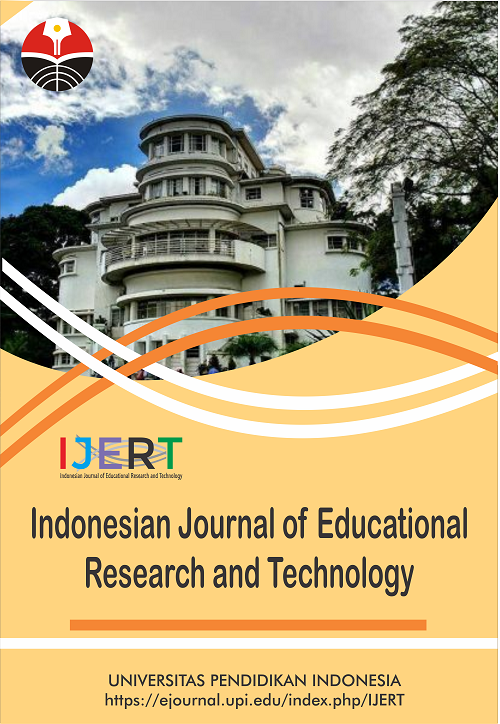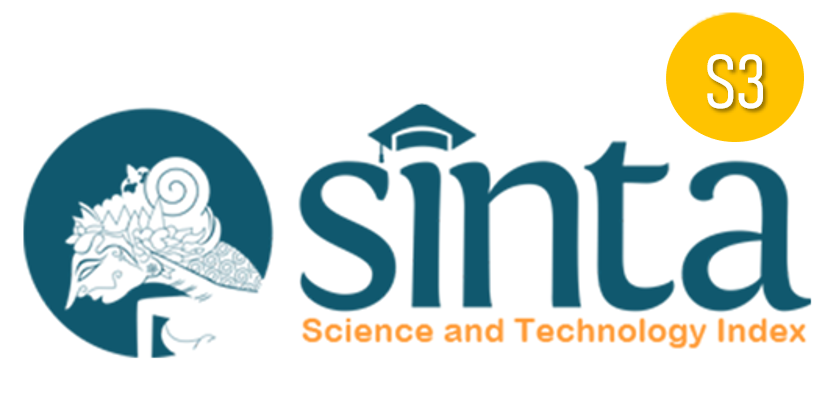Effect of Technology-Enabled Video Instruction on Senior Secondary School Students’ Performance in Selected Technical Drawing Concept in Ilorin
Abstract
Keywords
Full Text:
PDFReferences
Boateng, R., Boateng, S. L., Awuah, R. B., Ansong, E., and Anderson, A. B. (2016). Videos in learning in higher education: assessing perceptions and attitudes of students at the University of Ghana. Smart Learning Environments, 3(1), 1-13.
Diraso, D. K., Abdulahi, A. S., Manabete, S. S., Amalo, K., Mbudai, Y. D., Arabi, A. S., and Jaoji, A. A. (2013). Evaluation of students’ performance in technical and engineering drawing towards an effective career choice in engineering and technical and vocational education. International Journal of Education Resources and Developments. 2(4), 89-97.
Dori, Y. J., and Belcher, J. (2005). How does technology-enabled active learning affect undergraduate students' understanding of electromagnetism concepts? The Journal of the Learning Sciences, 14(2), 243-279.
Gambari, A. I., Yaki, A. A., Gana, E. S., and Ughovwa, Q. E. (2014). Improving secondary school students' achievement and retention in biology through video-based multimedia instruction. InSight: A Journal of Scholarly Teaching, 9, 78-91.
Gambari, A. I., Yusuf, H. T., and Balogun, S. A. (2015). Effectiveness of powerpoint presentation on students' cognitive achievement in technical drawing. Malaysian Online Journal of Educational Technology, 3(4), 1-12.
Isiaka, B. (2007). Effectiveness of video as an instructional medium in teaching rural children agricultural and environmental sciences. International Journal of Education and Development using ICT, 3(3), 105-114.
Jung, J. (2021). Learning experience and academic identity building by master's students in Hong Kong. Studies in Higher Education, 46(4), 782-795.
Kim, K., Sharma, P., Land, S. M., and Furlong, K. P. (2013). Effect of active learning on enhancing students’ critical thinking in an undergraduate general science course. Innovative Higher Education, 33(1): 45-55.
Lorenzo, M., Crouch, C. H., and Mazur, E. (2006). Reducing the gender gap in the physics classroom. American Journal of Physics, 74(2), 118-122.
Lowerison, G., Sclater, J., Schmidt, R. F., and Abrami, P. C. (2006). Student perceived effectiveness of computer technology use in post-secondary classrooms. Computer and Education, 47(4), 465-489.
Pai, A. (2014). A picture worth a thousand words? Making a case for Video case studies. Journal of College of Science Teaching, 43(4), 63-67.
Rafi, A., and Samsudin, K. A. (2007). The Relationships of Spatial Experience, Previous Mathematics Achievement, and Gender with Perceived Ability in Learning Engineering Drawing. Journal of Technology Education, 18(2), 53-67.
Shipper, F. (2013). If a Picture is worth 1,000 words, Is a video worth 3,000 words? A Review of Video Resources Available for Use in Today’s Management of Classroom. Academy of Management, Learning and Education, 12(4), 684-686.
Young, F., Tuckwell, D., and Cleveland, B. (2021). Actualising the affordances of innovative learning environments through co-creating practice change with teachers. The Australian Educational Researcher, 5(1), 1-22.
DOI: https://doi.org/10.17509/ijert.v2i2.43559
Refbacks
- There are currently no refbacks.
Copyright (c) 2022 Universitas Pendidikan Indonesia

This work is licensed under a Creative Commons Attribution-ShareAlike 4.0 International License.







.png)




